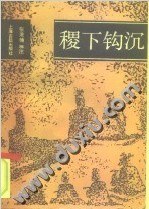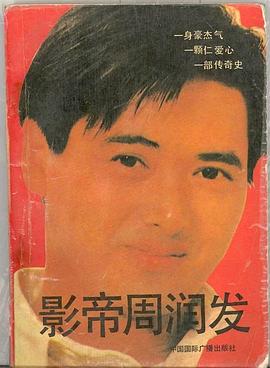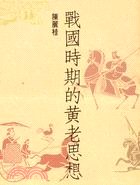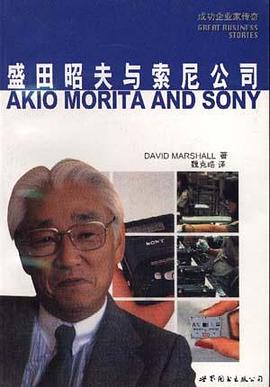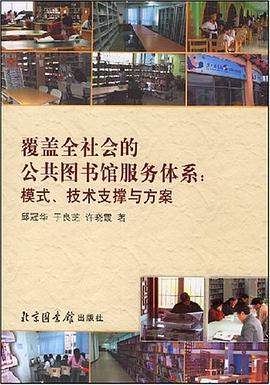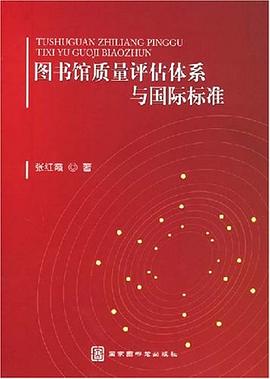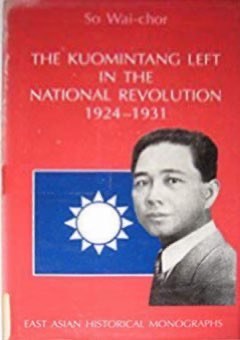
The Kuomintang Left in the National Revolution, 1924-1931 pdf epub mobi txt 电子书 下载 2025
- 苏维初
- 海外中国学
- 思想史
- 1991
- 马克思主义及其研究
- 海外中国研究
- 民国史
- 政治学
- Kuomintang
- National Revolution
- Chinese History
- Political History
- Left-wing Politics
- 1920s China
- 1930s China
- Sun Yat-sen
- Wang Jingwei
- Hu Hanmin

具体描述
The debacle of the Kuomintang regime in Mainland China in 1949 showed that the political course pursued by Chiang Kai-shek had completely failed to meet the challenges of the time. Since then there has been much speculation on whether the Kuomintang regime would have survived in China if a different political course had been pursued by the party. This kind of curiosity has now drawn historians’ attention to the Kuomin tang Left, which during 1928-31 had initiated an opposition movement against Chiang Kai-shek’s regime in Nanking; it had expounded its own ideological stand and offered an alternative programme to the official policy line. This thesis is a study of the opposition movement of the Kuomintang Left in 1928-31 and attempts to answer the question of whether the Kuomintang Left had propounded a viable alternative to Chiang’s course within the political context of the time.
The opposition movement led by the Kuomintang Left started in late 1928 when the Leftist leadership was displaced from the Party Central in Nanking and its positions in the party at regional level were being challenged. The Leftist opposition movement against Nanking can be divided into two important phases. The first phase began with the “Party-Defending and National Salvation Movement” in mid-1929 and culminated in the Enlarged Party Conference in Peiping in July 1930. The second phase started with the summoning of the Extraordinary Party Conference in Canton in May 1931 and ended with the beginning of the “Wang-Chiang cooperation” in January 1932. In these two phases of opposition movement, the Kuomintang Left not only had obtained support from other opposition groups in the party but, more importantly, also had secured al liances with major regional militarists who launched several large-scale military cam paigns against Nanking. In the end the opposition movement failed to bring down Chiang Kai-shek’s regime in Nanking; ironically its only notable result was to usher in an era of “Wang-Chiang cooperation” in the Nanking regime which on the whole lasted until Wang’s defection to the Japanese side during the Sino-Japanese War.
The detailed investigation into the Leftist opposition movement during 1928-31 has led this study to conclude that the Leftist alternative was not viable within the political context of the time. In the first place, the quality of the Leftist leadership left much to be desired. There were remarkable differences in ideological orientation at the top level of the leadership and a lack of firm political will was evident among Leftist leaders. In particular, Wang Ching-wei’s ever readiness to make compromises in the long run had undermined the Leftist appeal to the party’s rank and file and to the masses in general. Furthermore, though for a time the Left did enlist significant support of the party’s ranks and build a constituency among certain sections of the population, its strength in the party could not withstand the onslaught from the Nanking Govern ment and its social constituency was at most marginal. Eventually Wang Ching-wei decided to end the Leftist opposition movement and came to terms with Chiang Kai- shek shortly after the Manchurian Incident. An absence of leadership and inadequate political strength of the Kuomintang Left rendered the Leftist alternative not viable in Chinese Republican history.
作者简介
苏维初教授(Professor So Wai Chor),香港公开大学中国和国际研究教授。本硕毕业于香港大学,博士毕业于澳大利亚国立大学,主要研究领域在于国共党史和外交史,开设有现代中国、中国近代史 (1840-1949)、太平洋世纪等课程。
目录信息
ACKNOWLEDGEMENTS
ABBREVIATIONS USED IN NOTES
LIST OF TABLES
LIST OF FIGURES
INTRODUCTION
``````The Concept of the Kuomintang Left
``````The Issues
CHAPTER 1. POLARIZATION IN THE PARTY: THE KUOMINTANG
LEFT AND THE NANKING LEADERSHIP
``````The Genesis of the New Kuomintang Left in Canton
``````The "Wang-Chiang Understanding" and Party Politics in Late 1927
``````The Fourth Plenum: the Official Endorsement of a Deradicalization Line
``````The Fifth Plenum: the Consolidation of the Deradicalization Line
``````The Formation of the Nanking Leadership
CHAPTER 2: THE IDEOLOGY OF THE KUOMINTANG LEFT: THE FORMULATION OF THE LEFTIST ALTERNATIVE
``````The Intellectual Orientation of Ch'en Kung-po and Ku Meng-yu
``````A New Reorganization of the Kuomintang
``````The Class Base of the Kuomintang
``````The Nature and Direction of the National Revolution
``````Anti-imperialism, Mass Movements and Land Policies
``````The Platform of the Kuomintang Left January 1929
CHAPTER 3: THE LEFTIST ALTERNATIVE REDEFINED:
``````WANG CHING-WEPS THEORY OF DEMOCRACY
``````The Third National Party Congress March 1929
``````The Reshaping of the Ideology of the Kuomintang Left
``````Wang Ching-wei’s Theory of Democracy
``````The Decline of Ch’en Kung-po’s Ideological Influence
`````` The Revival of Ku Meng-yii’s Thought in 1931
CHAPTER 4: FROM THE PARTY-DEFENDING MOVEMENT TO THE ENLARGED CONFERENCE: THE ALLIANCE WITH REGIONAL MILITARISTS, 1929-30
``````The Kuomintang Left’s Alliance with Regional Militarists
``````The Party-Defending and National Salvation Movement Sept.-Dec. 1929
``````The Pragmatic Side of Wang Ching-wei’s Political Mind
``````The Enlarged Conference of the Party Central: the End of the RCA Cause
``````The Dissolution of the Enlarged Conference
CHAPTER 5: THE KUOMINTANG LEFT AS AN OPPOSITION FORCE: ITS LEADERSHIP, ORGANIZATION AND POWER BASE
``````The Leadership of the Kuomintang Left
``````The Reorganization Comrades Association: Organizational Structure, Funding Sources and Propaganda Network
``````The Strength of the Kuomintang Left in the Party
``````The Social Base of the Kuomintang Left
CHAPTER 6: THE EXTRAORDINARY CONFERENCE: THE LAST STAND OF THE LEFTIST OPPOSITION MOVEMENT
``````Wang Ching-wei and the Opposition Movement in Kwangtung
``````The Kuomintang Left in the Extraordinary Conference
``````The Merging of the Orthodox Party Line: the “Wang-Chiang Cooperation”
CONCLUSION
GLOSSARY BIBLIOGRAPHY
· · · · · · (收起)
读后感
评分
评分
评分
评分
用户评价
澳大利亚国立大学博士论文,王赓武的学生。硕论重要参考书,研究改组派及其思想开创性的作品,把改组派分为两阶段,指出陈公博的第一阶段具有浓厚的马克思主义倾向。我这破学校图书馆英文论著很少,还好有这本。
评分断断续续读了两个月,起初是为写陈公博而读,此书早于李志毓的左派研究,很有眼光,看过之后觉得李的若干观点不免滞后。资料上不突出,主要是开创之风,关于陈公博和改组派在王克文的研究里另有延伸,可稍作对比。第三章关于汪精卫的民主理念,将来或可有延伸。
评分澳大利亚国立大学博士论文,王赓武的学生。硕论重要参考书,研究改组派及其思想开创性的作品,把改组派分为两阶段,指出陈公博的第一阶段具有浓厚的马克思主义倾向。我这破学校图书馆英文论著很少,还好有这本。
评分断断续续读了两个月,起初是为写陈公博而读,此书早于李志毓的左派研究,很有眼光,看过之后觉得李的若干观点不免滞后。资料上不突出,主要是开创之风,关于陈公博和改组派在王克文的研究里另有延伸,可稍作对比。第三章关于汪精卫的民主理念,将来或可有延伸。
评分断断续续读了两个月,起初是为写陈公博而读,此书早于李志毓的左派研究,很有眼光,看过之后觉得李的若干观点不免滞后。资料上不突出,主要是开创之风,关于陈公博和改组派在王克文的研究里另有延伸,可稍作对比。第三章关于汪精卫的民主理念,将来或可有延伸。
相关图书
本站所有内容均为互联网搜索引擎提供的公开搜索信息,本站不存储任何数据与内容,任何内容与数据均与本站无关,如有需要请联系相关搜索引擎包括但不限于百度,google,bing,sogou 等
© 2025 book.quotespace.org All Rights Reserved. 小美书屋 版权所有




